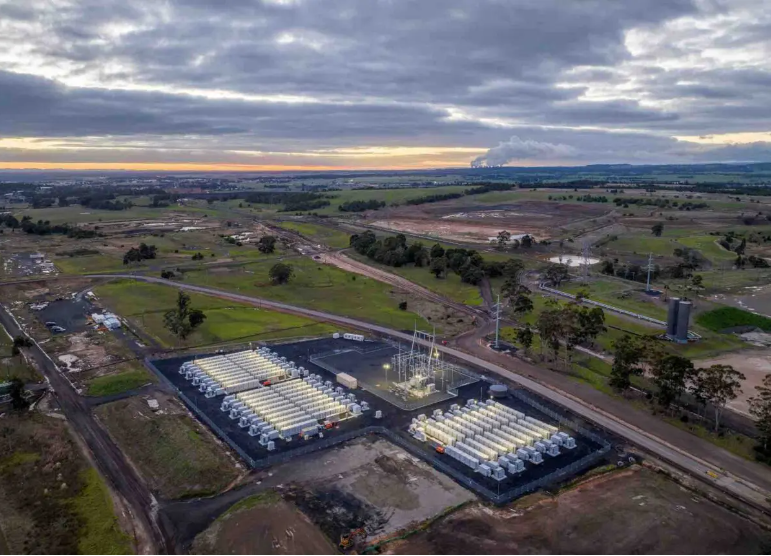
The 150MW, one hour Hazelwood battery is located at the site of what was once the country’s dirtiest coal generator, a 1600MW giant that was shut down in early 2017, controversially with little notice.
It was a move that set in train a period of high power prices and political outrage. But it also accelerated efforts to build new wind, solar and storage.
The Hazelwood battery energy storate system – which began testing on the grid in April – is majority owned by French energy company Engie, the owner of the former Halzewood coal plant, and 30 per cent by the newly formed Macquarie Group battery spinoff, Eku Energy.
Hazelwood might be the first big battery to be built on the site of a former or existing coal generator, but is by no means the last.
Big batteries are and will be built at the sites of the Kogan Creek, Stanwell, Swanbank, and Tarong plants in Queensland, and at the sites of the Liddell, Eraring and Mt Piper coal plants in NSW, along with Loy Yang in Victoria and in Collie in Western Australia.
The reason is pretty clear. Coal fired generators are getting old and less reliable and less able to cope with the changing dynamics of a grid driven by a large uptake of wind and solar.
But coal plants may be shutting down but they leave infrastructure – switchyards, substations and power lines – that make it easier and cheaper for big batteries to connect to the grid.
And while the batteries themselves do not have the raw capacity of the coal plants they are replacing, they do have the flexibility to respond to variations in wind and solar, and they delight in the price volatility – charging at times of low or even negative prices, and discharging when demand in high.
Rik De Buyserie, the head of Engie in Australia, says Hazelwood is the perfect location for a battery that will likely grow – adding more hours of storage, and also capacity, as the market requires.
“With its access to transmission and available space at site, Hazelwood is the perfect location for an asset that can grow in depth and duration, increasing the hosting capacity for renewables,” he said in a statement.
Victoria has a 95 per cent renewable energy target by 2035, which will require significant amounts of new wind, solar and storage to replace the three big coal generators in the Latrobe Valley that will retire by then – Yallourn in 2028, and Loy Yang A and Loy Yang B in the early 2030s.
“Victoria is leading the nation in delivering battery and energy storage projects, with our ambitious energy storage targets ensuring that Victoria continues to attract industry investment and collaboration opportunities like this,” said state energy minister Lily D’Ambrosio, who officially opened the battery.
“The Latrobe Valley has been the home of Victoria’s energy generation for decades and new investment in technologies like energy storage will help solidify its role in our renewable energy future.”
Hazelwood is the first of many batteries planned by Eku Energy, which is Macquarie Group’s newly launched battery storage specialist, and is now also partly owned by Canada’s British Columbia Investment Management.
Eku is also building the 250MW/500MWh Big Canberra battery in the ACT, and is teaming up with Shell for the 200MW/400MWh Rangebank battery near Melbourne. It has other un-named projects around Australia.
Daniel Burrows, the chief investment officer and head of Asia Pacific for Eku Energy said it is the biggest battery to be built in Australia with private finance, meaning without any government support or contracts, and is a significant event in the transition to green energy.
“Storage solutions remain key to the pace at which we can transition to renewable energy, and today’s event marks another proud milestone in Eku Energy’s global energy storage portfolio,” he said.
The Hazelwood battery is likely to focus on grid services such as frequency control and the newly created very fast frequency market, which is why it has only one hour storage in its first stage. It will likely add more hours of storage as the market develops for time shifting the output of wind and solar.
The Hazelwood battery uses technology supplied by Fluence, and is the first in Australia to deploy its Gridstack energy storage product and its Fluence Mosaic bidding software.
“This is a day for history books,” said Fluence’s GM in Australia Achan Sondhi. “What we have achieved here today paves the way for other centralised coal fired power stations in Australia to join us on our journey towards a clean energy transition.”